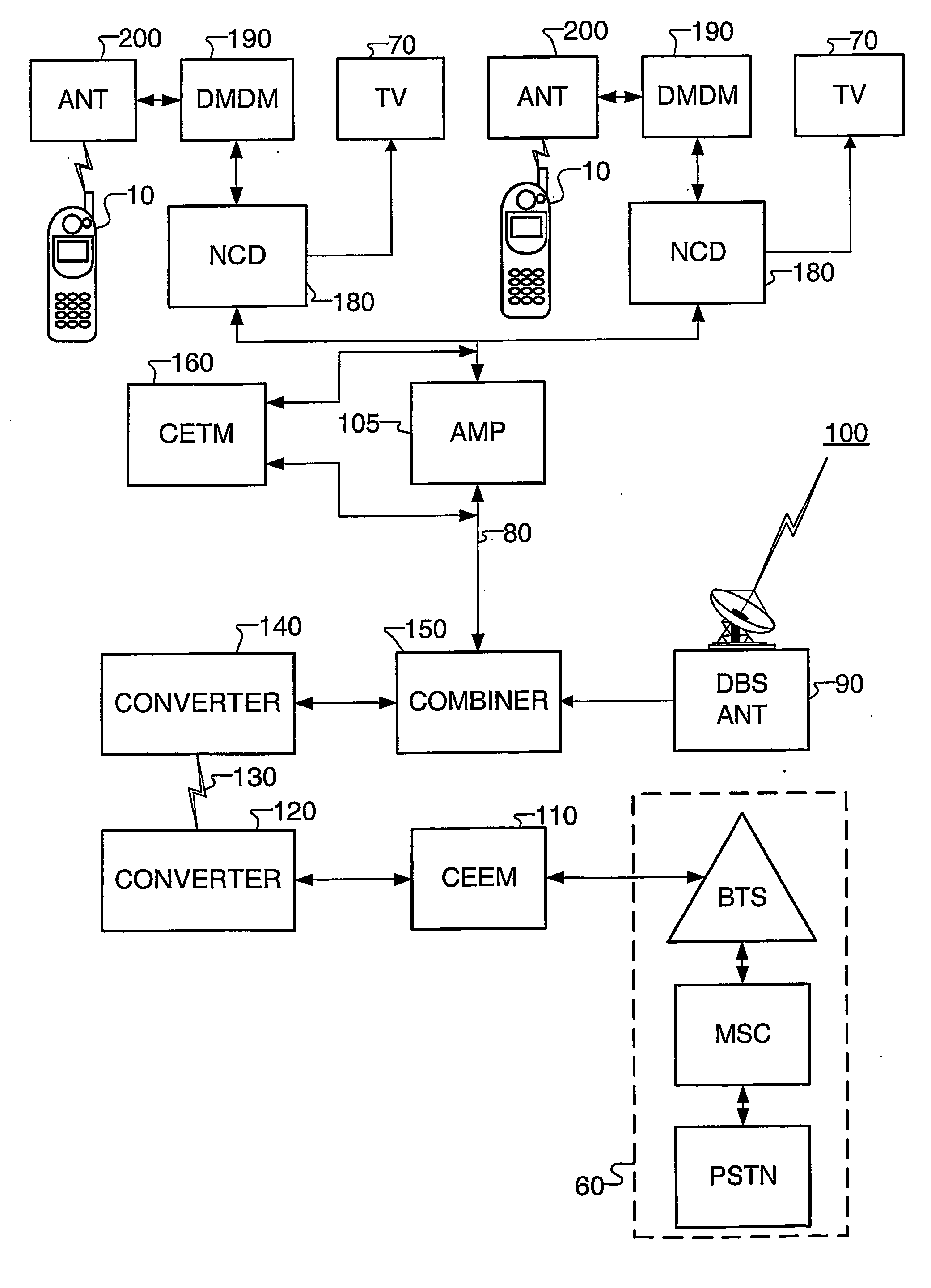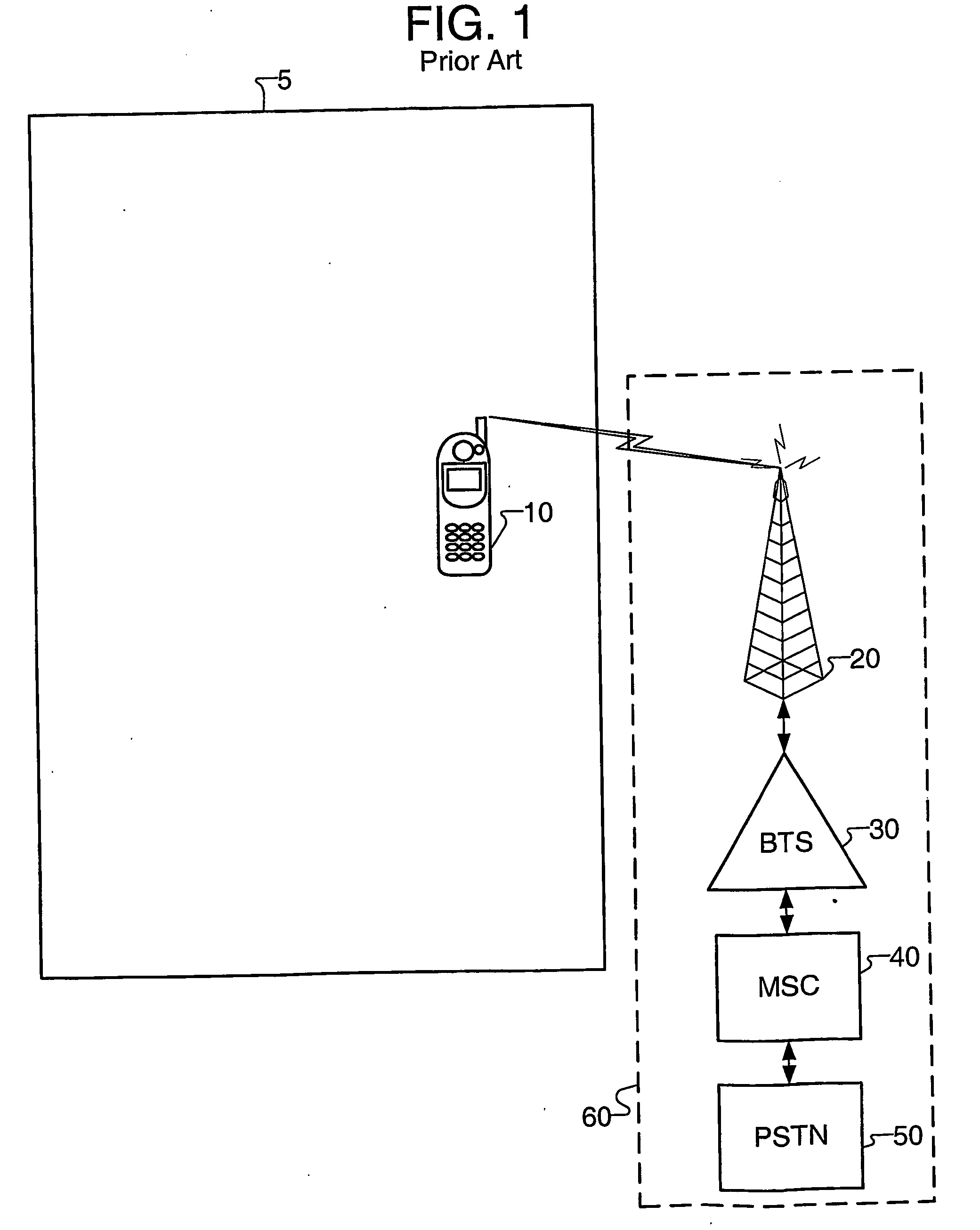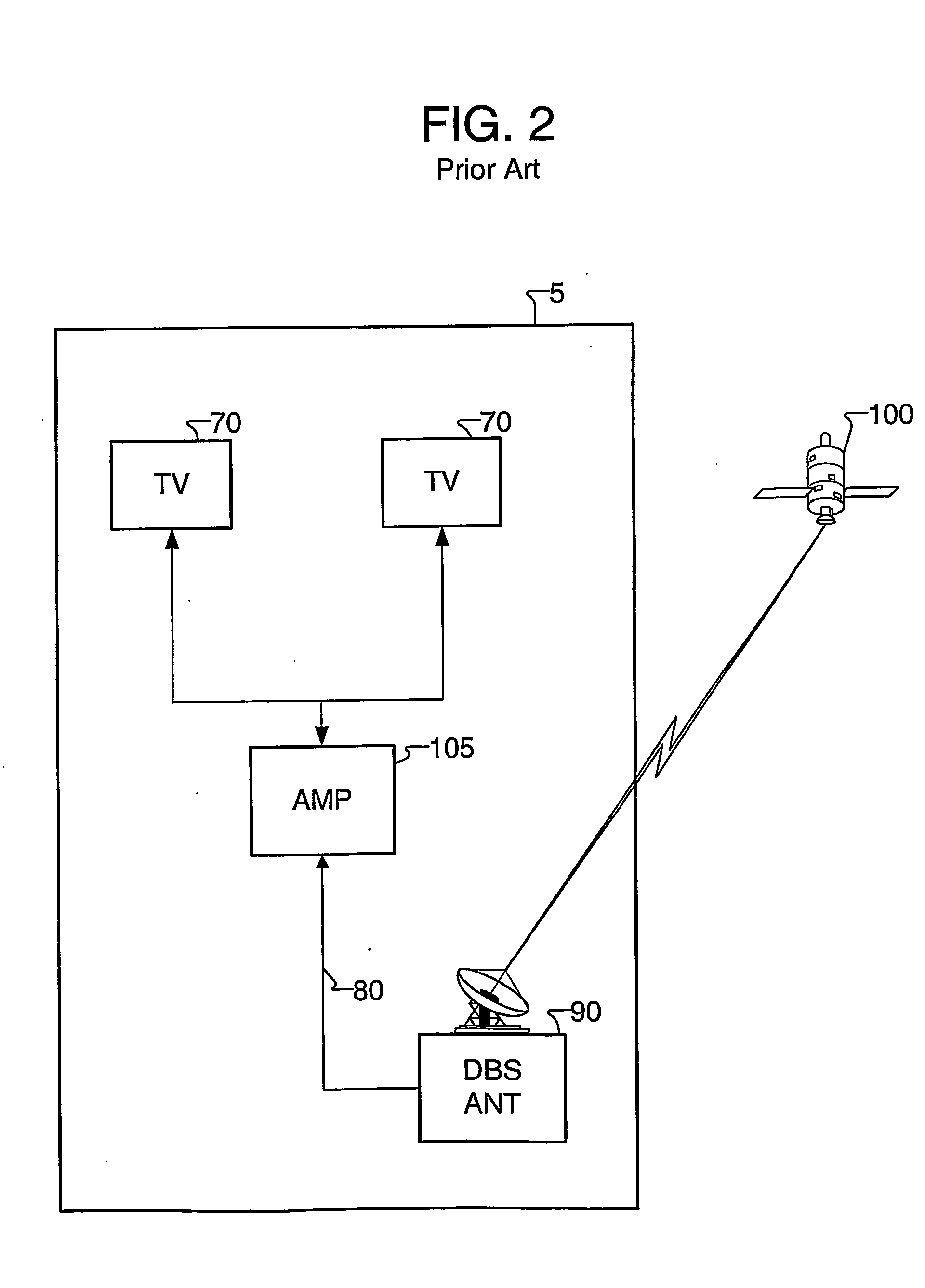Multi-band cellular service over direct broadcasting service (dbs) network
a cellular service and direct broadcasting technology, applied in the field of multi-band cellular service over direct broadcasting service (dbs) network, can solve the problems of station requirements an important amount of real estate, microcells are usually limited in terms of their total available capacity, and the conventional implementation of mobile radio networks has had some important limitations. the effect of reducing the reuse factor and increasing the available capacity of the network
- Summary
- Abstract
- Description
- Claims
- Application Information
AI Technical Summary
Benefits of technology
Problems solved by technology
Method used
Image
Examples
embodiment 1
[0044]
[0045] A conventional DBS network running from the rooftop antenna to the customer premises is typically a one-way network having a tree and branch topology with cables, amplifiers, signal splitters / combiners and filters. According to one aspect of the inventive system, the cables and other passive components like signal splitters / combiners are not modified, but the other active elements and filters are. Thus, the system includes new components for a DBS system that permits to overlay a multi-band, multi-standard, bi-directional communication system. The modified components allow both types of signals (the DBS signals and the cellular up and down signals) to be carried by the network simultaneously in a totally independent manner (avoiding cross-coupling, which can be a source of an unacceptable interference).
[0046]FIG. 3 shows an exemplary system according to this embodiment of the invention.
[0047] In FIG. 3, DBS programming is received from satellite 100 through the DBS an...
PUM
 Login to View More
Login to View More Abstract
Description
Claims
Application Information
 Login to View More
Login to View More - R&D
- Intellectual Property
- Life Sciences
- Materials
- Tech Scout
- Unparalleled Data Quality
- Higher Quality Content
- 60% Fewer Hallucinations
Browse by: Latest US Patents, China's latest patents, Technical Efficacy Thesaurus, Application Domain, Technology Topic, Popular Technical Reports.
© 2025 PatSnap. All rights reserved.Legal|Privacy policy|Modern Slavery Act Transparency Statement|Sitemap|About US| Contact US: help@patsnap.com



